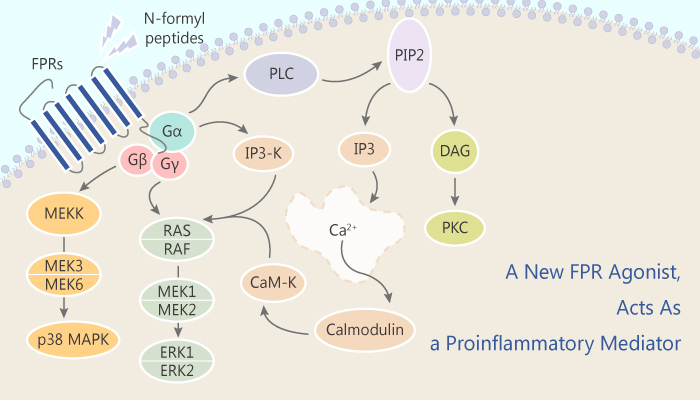As we all know, Neutrophils are the most abundant leukocytes in the circulation. Especially, Neutrophils are first line of defense in the innate arm of the immune system. Particularly, Neutrophils also participate as mediators of inflammation. Neutrophils are important modulators of both inflammation and immune responses. Moreover, Neutrophil recruitment and survival are important control points in the development and resolution of inflammatory processes. As a result, Neutrophils play a central role in innate immunity and are recruited rapidly to sites of infection and injury. IL-8 is an important chemokine for inflammatory diseases where neutrophils play a crucial role, such as COPD and cystic fibrosis.
These polymorphonuclear leucocytes are able to migrate into the inflamed lung along a gradient of increasing concentrations of chemoattractant released by other inflammatory cells, such as alveolar macrophages and epithelial cells. There are three human FPRs: FPR1, FPR2/ALX, and FPR3. LXA4 is an endogenous ligand for FPR2/ALX. The FPR2/ALX binds endogenous and exogenous lipid and protein ligands, eliciting either proinflammatory or anti-inflammatory responses, indicating that FPR2/ALX can serve as a stereoselective yet multirecognition receptor in immune responses.
In our study, FPR Agonist 43 induces FPR2/ALX-mediated signalling, enhancing guanosine triphosphate-gamma (GTPγ) binding and decreasing cyclic adenosine monophosphate (cAMP) levels. Gratifyingly, TC-FPR 43 is a small molecular weight FPR2/ALX agonist. TC-FPR 43 is actively potent in the cAMP assay in FPR2/ALX over-expressing CHO cells (IC50=11.6±1.9 nM). TC-FPR 43 is also active in the GTPγ binding assay (IC50=207±51 nM). Besides, TC-FPR 43 induces FPR2/ALX signalling, acting as proinflammatory mediators in neutrophils.
